 I do not think that a whole chapter on terminology in the early portions of this
book rather than as an appendix requires any justification; nor is it due to
the author's linguistic-analytical slant in his philosophical interests. A book
attempting to survey the tantric tradition in its essentials must give very
special attention to terminology and definition. In a wider or more general
sense, this has been done in the preceding chapter. However, reference to
established Hindu and Buddhist philosophical terminology is neither sufficient
nor warrantable, because a considerable portion of nontantric Hindu and
Buddhist philosophical nomenclature was subjected to semantic change, sometimes
subtle, sometimes very radical indeed. A term frequently and innocuously used,
say, in the Madhyamika-karikas, and translated by one constant term into
Tibetan, does not necessarily have the same meaning in Tibetan or Indian
tantric texts. The fact that the student sees the terms consistently used in
the Indian original and in the Tibetan translation might tempt him to assume
that they mean the same when they appear in a Sanskrit tantric text and its
Tibetan translation. This is dangerous even when the term occurs in Sanskrit
Hindu and Buddhist texts alone, where no Tibetan translation is available hardly
any Hindu Sakta text appears in the Tibetan tantras (rgyud). The best example
is Sanskrit mundra, which means 'the female adept' in the Buddhist tantric
lore, and 'parched kidney beans' and other spiced grains in the Hindu Sakta tradition;
quite apart from the many tantric and non-tantric passages, Hindu and Buddhist,
where mundra means a ritualistic or iconographic gesture.
I do not think that a whole chapter on terminology in the early portions of this
book rather than as an appendix requires any justification; nor is it due to
the author's linguistic-analytical slant in his philosophical interests. A book
attempting to survey the tantric tradition in its essentials must give very
special attention to terminology and definition. In a wider or more general
sense, this has been done in the preceding chapter. However, reference to
established Hindu and Buddhist philosophical terminology is neither sufficient
nor warrantable, because a considerable portion of nontantric Hindu and
Buddhist philosophical nomenclature was subjected to semantic change, sometimes
subtle, sometimes very radical indeed. A term frequently and innocuously used,
say, in the Madhyamika-karikas, and translated by one constant term into
Tibetan, does not necessarily have the same meaning in Tibetan or Indian
tantric texts. The fact that the student sees the terms consistently used in
the Indian original and in the Tibetan translation might tempt him to assume
that they mean the same when they appear in a Sanskrit tantric text and its
Tibetan translation. This is dangerous even when the term occurs in Sanskrit
Hindu and Buddhist texts alone, where no Tibetan translation is available hardly
any Hindu Sakta text appears in the Tibetan tantras (rgyud). The best example
is Sanskrit mundra, which means 'the female adept' in the Buddhist tantric
lore, and 'parched kidney beans' and other spiced grains in the Hindu Sakta tradition;
quite apart from the many tantric and non-tantric passages, Hindu and Buddhist,
where mundra means a ritualistic or iconographic gesture.
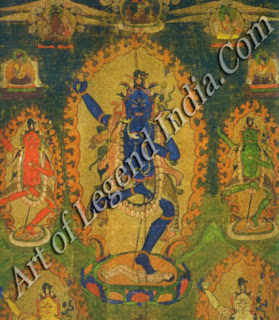 The
purpose of this chapter, then, is to analyse some crucial Sanskrit and Tibetan
Buddhist tantric terms and to establish their exact connotation. This has so
far not been done, largely due to a lack of communication between philosophers
and cultural anthropologists on the one side, and philologically oriented
Buddhologists on the other. The fault seems to be that of the Buddhologists,
who did not care, up to this day, to brush up their occidental vocabulary and
to provide precise renditions of Buddhist, and a fortiori, tantric
philosophical terminology. The reason for this neglect seems to lie in the
notion that occidental philosophy works on totally different lines and that it
can there-fore not provide terminological equivalents. This was true with the
traditional western philosophers who excluded Indian thought from their study
as below philosophical dignity' and whose attitude was reciprocated by the
orientalist brand of counter-arrogance: that western philosophy was lacking the
spiritual in-sight which could help it tackle the esoteric problems of Asian
thought. Traditional philosophy say, up to Russell and Ayer was really not
interested in creating a precise vocabulary that could suggest operational
equivalents for Indian and Tibetan scholastic terminology. The analytical
schools of Britain and America, however, have worked out a vocabulary which
could be highly useful in rendering the former intelligible. To my know-ledge,
however, no indologist with the exception of H. V. Guenther in India and Europe
and Karl H. Potter in North America have cared to avail themselves of the work
that has been done by occidental philosophers who regard language analysis as
the main function of philosophy.
The
purpose of this chapter, then, is to analyse some crucial Sanskrit and Tibetan
Buddhist tantric terms and to establish their exact connotation. This has so
far not been done, largely due to a lack of communication between philosophers
and cultural anthropologists on the one side, and philologically oriented
Buddhologists on the other. The fault seems to be that of the Buddhologists,
who did not care, up to this day, to brush up their occidental vocabulary and
to provide precise renditions of Buddhist, and a fortiori, tantric
philosophical terminology. The reason for this neglect seems to lie in the
notion that occidental philosophy works on totally different lines and that it
can there-fore not provide terminological equivalents. This was true with the
traditional western philosophers who excluded Indian thought from their study
as below philosophical dignity' and whose attitude was reciprocated by the
orientalist brand of counter-arrogance: that western philosophy was lacking the
spiritual in-sight which could help it tackle the esoteric problems of Asian
thought. Traditional philosophy say, up to Russell and Ayer was really not
interested in creating a precise vocabulary that could suggest operational
equivalents for Indian and Tibetan scholastic terminology. The analytical
schools of Britain and America, however, have worked out a vocabulary which
could be highly useful in rendering the former intelligible. To my know-ledge,
however, no indologist with the exception of H. V. Guenther in India and Europe
and Karl H. Potter in North America have cared to avail themselves of the work
that has been done by occidental philosophers who regard language analysis as
the main function of philosophy.
 I shall
start with a simple example: Tibetan sems, Sanskrit citta, is translated by
such vague terms as 'mind' or even 'sour the latter being a downright atrocious
translation so far as Buddhism is concerned. At best, the inadequacy of such
renditions is admitted with a shrug as a bequest of last-century indology.
However, I feel convinced that modern philosophy does give us an instrument to
work out these vexing problems. With the growth of Tibetan Buddhist studies
arose the habit of giving the Sanskrit term for the Tibetan in lieu of a translation,
thus shelving the real issue; for while it is true that, for example, `nirmanakaya'
is the Sanskrit equivalent of 'sprul sku', it is not very helpful to just write
` nirmanakaya ' in Roman characters, although the realization of the inadequacy
of a term like 'phantom-body' is laudable. For what, then, is the
'nirmanakaya'?
I shall
start with a simple example: Tibetan sems, Sanskrit citta, is translated by
such vague terms as 'mind' or even 'sour the latter being a downright atrocious
translation so far as Buddhism is concerned. At best, the inadequacy of such
renditions is admitted with a shrug as a bequest of last-century indology.
However, I feel convinced that modern philosophy does give us an instrument to
work out these vexing problems. With the growth of Tibetan Buddhist studies
arose the habit of giving the Sanskrit term for the Tibetan in lieu of a translation,
thus shelving the real issue; for while it is true that, for example, `nirmanakaya'
is the Sanskrit equivalent of 'sprul sku', it is not very helpful to just write
` nirmanakaya ' in Roman characters, although the realization of the inadequacy
of a term like 'phantom-body' is laudable. For what, then, is the
'nirmanakaya'?
It goes
without saying that we cannot impugn the Tibetan translations of the original
Sanskrit terms, and that for logical reasons: the Tibetans had no concepts
matching the learned terminology of their Indian preceptors. We must assume
that Buddhism was planted on a conceptual vacuum in Tibet. Any term chosen
once, and used without modification, had come to stay. It is quite unlike
trying to find an occidental term for a Sanskrit or Tibetan scholastic idiom,
because occidental languages have a backlog of viable, even though risky,
Graeco-Roman-Judaeo-Christian concepts. This shows itself in the translation of
such innocuous words as (deva) as `god' or dnos pa (vastu) as 'substance' or
'nature'. 'Substance' cannot get rid of its Thomistic or Aristotelian flavour,
and there is nothing of the kind in the Buddhist `vastu'. We shall see,
however, that contemporary, non-Aristotelian philosophy might provide a useful
term for the Buddhist concept. H. V. Guenther suggests 'reality', which would
be acceptable if, as he does, the word is used as shorthand for 'all objects';
in other words if the Aristotelian flavour hovering around nouns suffixed by
-ty can be kept out. I would recommend 'totality of sense-data' or even just
'all objects'; and never omitting the article for deva 'a god'.
To say
that Tibetan renditions of Sanskrit terminology are 'more exact' than any
western rendition is a sort of wrongly formulated tautology: the Tibetan term
had to create the new concept, not to translate it. Translation is possible
where both languages have words for a concept; if we call the work oldie Lo tsa
ba 'translation', it is either incorrect or a courtesy: for he had to concoct
Tibetan words for the Sanskrit original. Linguists might call this a one-zero
relational process.
I
believe that the cumbersome but accurate terminology of contemporary analytic
philosophy has to be used to outgrow terminological nonchalance, even at the
risk of having to adopt tools which so far belonged to another discipline. It
seems to me that the philosophical analyst's apparatus may at times tempt us to
ascribe too much sophistication to the Indian and Tibetan pundits. I think
Guenther often yields to this temptation his translation of sGam.po.pa
sometimes reads like a psychologist's manual. The danger can be avoided if we
consistently use the modern terminology under a special rubric the Indian and
Tibetan philosophers' categories are intuitive ones, those of western
philosophy are discursive postulates, from the crude Aristotelian 'Laws of Thought'
to today's logical calculi. Hence if we translate, for instance, 'sons' by
'causal characteristic of mind', our rubric which we may call an
'intuition-rubric' would read somewhat like: 'given that the word is used not
as connoting a discursive or cognitive category but as corroborating an
intuitive (i.e. non-discursive) experience' sems (citta) means 'causal
characteristic of mind'; `bdag med (anatman) means 'non-individuality', etc.
I now
proceed with some typical paradigms. I shall concentrate, in this chapter, on
terms of the 'mind' class which in. a special sense is almost coextensive with
Buddhist terminology in general, 'mind' in its widest sense being all that
exists particularly with the Yogacara School which provided Tantric Buddhism
with its theological superstructure, sharing a hard core with the older
Madhyamika teachings.
sems (citta)
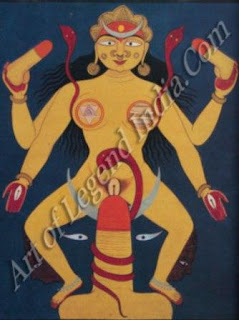 Jaeschke
was ignorant of the doctrinal meaning of this term in theology. In the first
place, he equated it with Sanskrit sattva ('being'). S. C. Das placed it last
in his enumeration of three Sanskrit equivalents; and rightly so, because in
theological parlance `sems' translates `sattva' only in terms like 'mahasattva'
(sems dpa cen po). It is hardly astonishing that not one of Jaeschke's English
renditions was determined by a passage of theological significance he adduces
only instances of trivial use, like 'sem khan du chud pa', one very much
grieved', `sem chun ba', a timid mind', etc. As English equivalents he lists
the vague 'spirit'-'mind'-'soul'. But these are inapplicable in any Tibetan or
Indian Buddhist context; I suspect he used `sems' to render the Christian
'soul' for the benefit of his flock. None of these English terms are useful in
Buddhist terminology.
Jaeschke
was ignorant of the doctrinal meaning of this term in theology. In the first
place, he equated it with Sanskrit sattva ('being'). S. C. Das placed it last
in his enumeration of three Sanskrit equivalents; and rightly so, because in
theological parlance `sems' translates `sattva' only in terms like 'mahasattva'
(sems dpa cen po). It is hardly astonishing that not one of Jaeschke's English
renditions was determined by a passage of theological significance he adduces
only instances of trivial use, like 'sem khan du chud pa', one very much
grieved', `sem chun ba', a timid mind', etc. As English equivalents he lists
the vague 'spirit'-'mind'-'soul'. But these are inapplicable in any Tibetan or
Indian Buddhist context; I suspect he used `sems' to render the Christian
'soul' for the benefit of his flock. None of these English terms are useful in
Buddhist terminology.
S. C.
Das does not fare much better. He was right about his Sanskrit equivalents,
citta, manas, sattva, if his arrangement does imply descending semantical
frequency!' He lists 'soul' (qualifying it 'as power of moral volition'),
'spirit'; 'the heart where the soul resides'; 'mind'.
There
are two ways to produce a correct translation of this and other equally
fundamental terms; we either look for a phrase which can serve as a common
denominator whenever the word occurs. Thus, Guenther wrote in a different
context `In the case of sems, we might use "spirituality" as a common
denominator term'.
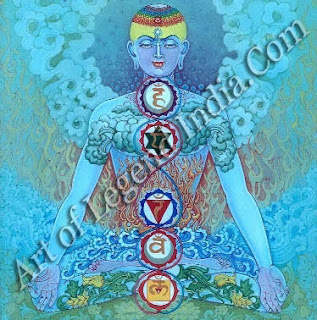 The alternative would be to use an adequate paraphrase
culled from analytical terminology each time the term occurs, putting the
original in parentheses; the term is used as an operational counfer by the
pandit and the Tibetan translator, and he knows its particular import from the
context which can, of course, not be known through any occidental translation
using vague generic terms. For example, we might say: `mental events (sems) recurrent
associative event (sems) etc. Personally, I would incline towards the second
method. There is the possibility of a combination of the two methods, if we
agree that a particular occidental term be used as an `operational counter'
each time the Tibetan `operational counter' appears in the text, provided the
former is never used to translate any other original term. Thus, if we choose
`spirituality' for `sems', we must not use 'spirituality'. to render any other
term, like 'thugs'; at least not as long as we do not know for certain that
'thugs' and `sems' arc not complete synonyms in scholastic literature.
The alternative would be to use an adequate paraphrase
culled from analytical terminology each time the term occurs, putting the
original in parentheses; the term is used as an operational counfer by the
pandit and the Tibetan translator, and he knows its particular import from the
context which can, of course, not be known through any occidental translation
using vague generic terms. For example, we might say: `mental events (sems) recurrent
associative event (sems) etc. Personally, I would incline towards the second
method. There is the possibility of a combination of the two methods, if we
agree that a particular occidental term be used as an `operational counter'
each time the Tibetan `operational counter' appears in the text, provided the
former is never used to translate any other original term. Thus, if we choose
`spirituality' for `sems', we must not use 'spirituality'. to render any other
term, like 'thugs'; at least not as long as we do not know for certain that
'thugs' and `sems' arc not complete synonyms in scholastic literature.
The
most frequent amplification of sems is sems pa, which is the equivalent of
Sanskrit caitta. This is a term which can be rendered most precisely by
'motivation'. The `chos mrion pa kun las btus pa' (Abhidarmasatnuccaya)
identifies 'karma' with 'Motivation' in analytical philosophy includes both the
urge to perform an action and the goal of the action in a teleological
sense."
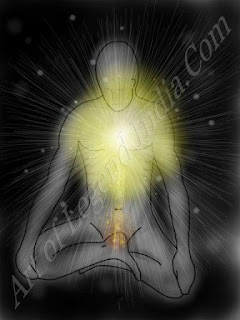 In an
important article, Guenther elucidates some of these terms. He says, 'it has
been customary to translate the terms sems (citta)" and "sems las
byung ha (caitta)" by "mind" and "mental event"
respectively. But this translation, however philologically correct, does not
tell us much until we know what is meant by these terms in relation to each
other. At first sight, the relation is comparable with that which common sense
assumes to exist between "thing" and the "states of the
thing". In this particular (i.e. the Buddhist tantric notion-A.B.) case,
mind (sems, citta) would be the "thing" and mental event (sems las
byung ba, caitta) the "state of the thing".
In an
important article, Guenther elucidates some of these terms. He says, 'it has
been customary to translate the terms sems (citta)" and "sems las
byung ha (caitta)" by "mind" and "mental event"
respectively. But this translation, however philologically correct, does not
tell us much until we know what is meant by these terms in relation to each
other. At first sight, the relation is comparable with that which common sense
assumes to exist between "thing" and the "states of the
thing". In this particular (i.e. the Buddhist tantric notion-A.B.) case,
mind (sems, citta) would be the "thing" and mental event (sems las
byung ba, caitta) the "state of the thing".
This is
borne out by an important tantric text, which says 'this mind under
consideration, when it has been changed by conditions such as trances and
dispositions, should be known as only a state of mind'." Hence, whenever
`sems (citta) occurs together with `sems las byung ba' (caitta), we might
translate it as 'conditioned mind' and 'state of mind' respectively. The
necessity of separate renderings of 'sons' becomes evident from these two
examples. In one case, when it translates `citta' we use 'conditioned mind';
and in the other, when it translates `cetanci' we use 'motivation'; now compare
these different renditions for meaningfulness, with the common rendering of
'sons' as 'mind', regardless of its context. The Tibetan translators had
something more specific in mind than just 'mind'. This example is important for
any future study of the development of ideas in Buddhism. `Citta' in Pali is
best rendered as `attituele'.'s It goes without saying that Rhys Davis,
Oldenberg, and the other old-timers in Pali Buddhism constantly used 'mind' and
its other occidental synonyms. I suggest that the development of Pali `citta'
into tantric `citta' (sems), i.e. from 'attitude' to a `conditioned mind', is
sound psychology.
`Mind' generally used as Gampopa's 'operational counter' is conditioned by
constantly recurring attitudes; in strict Yogicara argument it is actually but
the nominalistically conceived sum-total of attitudes.
I have
come to regard terminological susceptibilities as an important tool for tracing
religious axioms. To use this example `citta' when used by a Brahmin scholar
always means something like `mindstuff ' Swami Vivekananda constantly
translated 'dila' this way; no Buddhist of any school would ever think of any
sort of 'stuff' when he hears `citta'.
yid (mamas)
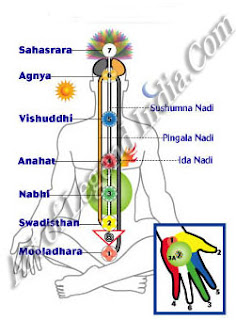 Jaeschke
again has soul, mind; Das adds 'intellect' and both explain 'especially the
powers of perception and imagination'. 'Soul' is impossible anyway; but whereas
`sems' might be translated 'mind' as an operational counter, 'mind' should
never be used to render 'yid' (manas). The 'powers of perception and
imagination' are subsumed under all Buddhist terms of the epistemological
order, the description is too wide to be of use. The precise role of 'yid'
(manas) in Buddhist tantra and in Yogicira is that of conceptualization.
Guenther puts it this way, 'it is that function event which is particularly
concerned with conceptualization'. The Vajrayana phrase `amanasikara' (Tibetan
yid la mi byed pa) implies the important meditation-hint 'not to conceptualize'
the various forms that arise in the course of the contemplative's training.
Jaeschke
again has soul, mind; Das adds 'intellect' and both explain 'especially the
powers of perception and imagination'. 'Soul' is impossible anyway; but whereas
`sems' might be translated 'mind' as an operational counter, 'mind' should
never be used to render 'yid' (manas). The 'powers of perception and
imagination' are subsumed under all Buddhist terms of the epistemological
order, the description is too wide to be of use. The precise role of 'yid'
(manas) in Buddhist tantra and in Yogicira is that of conceptualization.
Guenther puts it this way, 'it is that function event which is particularly
concerned with conceptualization'. The Vajrayana phrase `amanasikara' (Tibetan
yid la mi byed pa) implies the important meditation-hint 'not to conceptualize'
the various forms that arise in the course of the contemplative's training.
In
early scholastic literature, the epistemological term sems (citta), yid (manas)
and rnam par 'es pa (vijnana) are as yet used synonymously (Abliidharmakoia II,
34). In tantric times, this is no longer the case; as in all scholastic
philosophy, progress involved subtler terminological distinction. Yid (manas),
in tantric Buddhism, transmits sensations to its centre for their
interpretation. Once this interpreting function subsides as a result of the
prescribed meditative processes, the individual's notions about external
objects vanish and the yid (limas) is harmonized with its origin; there is no
conception whatever left.
 This basis is not a substratum in the Brahmanical
sense (which later incidentally converges
with the Thomistic notion of a `substratum'), but a sort of pool into which
things merge and from which they arise again. I think it could be likened to a
'flying start' in a horse-race: the 'flying-start' is not really a location but
a function located on a particular line. The Yogacara call this the 'alayavijnana
(kun ghi rnam par Les pa), the 'consciousness-receptacle' (Frauwallner
translates it `Schatzkammerbewusstsein' which sounds very nice but does not
seem too helpful).
This basis is not a substratum in the Brahmanical
sense (which later incidentally converges
with the Thomistic notion of a `substratum'), but a sort of pool into which
things merge and from which they arise again. I think it could be likened to a
'flying start' in a horse-race: the 'flying-start' is not really a location but
a function located on a particular line. The Yogacara call this the 'alayavijnana
(kun ghi rnam par Les pa), the 'consciousness-receptacle' (Frauwallner
translates it `Schatzkammerbewusstsein' which sounds very nice but does not
seem too helpful).
Guenther
does use 'mind' for 'yid' once in a while against his own knowledge of the
specific use of 'yid', but in the same book he paraphrases it as 'workings of
the mind'. Considering the above, I would render 'yid (manas) 'interpreting
function' or 'conceptualizing function'. Rnam par Les pa (vijnana) The
non-scholastic meaning of `vijficina' in Sanskrit and the derived languages is
simply 'consciousness' or, sometimes, 'intellect'. In Buddhist theology,
however, it is a key term, being the quintessence of the radical idealist
school (Vijtianavada or Yogacara);
 In their world view, which at times seems to
me to be dangerously close to solipsism, the term covers the entire natural
realm, somewhat in a Berkeleyan fashion except that esse is a totaliter
percipi, there being no divine mind as a separate ontological ens. Popular
literature on Buddhism (Humphreys, Glascnapp) uses 'subjective-objective' and
tries to explain how the objective merges in the subjective; which is an
outsider's diction, there being no 'objective' of any kind in Vijnanavada nor,
for that matter, in any important school of Buddhism. Jaeschke lists 'perfect
knowledge, consciousness'; 'perceptions, cognitions' (i.e. as one of the five
skandhas or aggregates phun po); and the inevitable 'soul', even though only
that of the departed. Then, however, Jaeschke adds something very wise in
parentheses: 'the significations. I presume, should be distinguished, as is
done here, according to the different spheres in which they are used and not to
be explained out of the other'.
In their world view, which at times seems to
me to be dangerously close to solipsism, the term covers the entire natural
realm, somewhat in a Berkeleyan fashion except that esse is a totaliter
percipi, there being no divine mind as a separate ontological ens. Popular
literature on Buddhism (Humphreys, Glascnapp) uses 'subjective-objective' and
tries to explain how the objective merges in the subjective; which is an
outsider's diction, there being no 'objective' of any kind in Vijnanavada nor,
for that matter, in any important school of Buddhism. Jaeschke lists 'perfect
knowledge, consciousness'; 'perceptions, cognitions' (i.e. as one of the five
skandhas or aggregates phun po); and the inevitable 'soul', even though only
that of the departed. Then, however, Jaeschke adds something very wise in
parentheses: 'the significations. I presume, should be distinguished, as is
done here, according to the different spheres in which they are used and not to
be explained out of the other'.
Writer – Agehananda Bharati
 I do not think that a whole chapter on terminology in the early portions of this
book rather than as an appendix requires any justification; nor is it due to
the author's linguistic-analytical slant in his philosophical interests. A book
attempting to survey the tantric tradition in its essentials must give very
special attention to terminology and definition. In a wider or more general
sense, this has been done in the preceding chapter. However, reference to
established Hindu and Buddhist philosophical terminology is neither sufficient
nor warrantable, because a considerable portion of nontantric Hindu and
Buddhist philosophical nomenclature was subjected to semantic change, sometimes
subtle, sometimes very radical indeed. A term frequently and innocuously used,
say, in the Madhyamika-karikas, and translated by one constant term into
Tibetan, does not necessarily have the same meaning in Tibetan or Indian
tantric texts. The fact that the student sees the terms consistently used in
the Indian original and in the Tibetan translation might tempt him to assume
that they mean the same when they appear in a Sanskrit tantric text and its
Tibetan translation. This is dangerous even when the term occurs in Sanskrit
Hindu and Buddhist texts alone, where no Tibetan translation is available hardly
any Hindu Sakta text appears in the Tibetan tantras (rgyud). The best example
is Sanskrit mundra, which means 'the female adept' in the Buddhist tantric
lore, and 'parched kidney beans' and other spiced grains in the Hindu Sakta tradition;
quite apart from the many tantric and non-tantric passages, Hindu and Buddhist,
where mundra means a ritualistic or iconographic gesture.
I do not think that a whole chapter on terminology in the early portions of this
book rather than as an appendix requires any justification; nor is it due to
the author's linguistic-analytical slant in his philosophical interests. A book
attempting to survey the tantric tradition in its essentials must give very
special attention to terminology and definition. In a wider or more general
sense, this has been done in the preceding chapter. However, reference to
established Hindu and Buddhist philosophical terminology is neither sufficient
nor warrantable, because a considerable portion of nontantric Hindu and
Buddhist philosophical nomenclature was subjected to semantic change, sometimes
subtle, sometimes very radical indeed. A term frequently and innocuously used,
say, in the Madhyamika-karikas, and translated by one constant term into
Tibetan, does not necessarily have the same meaning in Tibetan or Indian
tantric texts. The fact that the student sees the terms consistently used in
the Indian original and in the Tibetan translation might tempt him to assume
that they mean the same when they appear in a Sanskrit tantric text and its
Tibetan translation. This is dangerous even when the term occurs in Sanskrit
Hindu and Buddhist texts alone, where no Tibetan translation is available hardly
any Hindu Sakta text appears in the Tibetan tantras (rgyud). The best example
is Sanskrit mundra, which means 'the female adept' in the Buddhist tantric
lore, and 'parched kidney beans' and other spiced grains in the Hindu Sakta tradition;
quite apart from the many tantric and non-tantric passages, Hindu and Buddhist,
where mundra means a ritualistic or iconographic gesture.  The
purpose of this chapter, then, is to analyse some crucial Sanskrit and Tibetan
Buddhist tantric terms and to establish their exact connotation. This has so
far not been done, largely due to a lack of communication between philosophers
and cultural anthropologists on the one side, and philologically oriented
Buddhologists on the other. The fault seems to be that of the Buddhologists,
who did not care, up to this day, to brush up their occidental vocabulary and
to provide precise renditions of Buddhist, and a fortiori, tantric
philosophical terminology. The reason for this neglect seems to lie in the
notion that occidental philosophy works on totally different lines and that it
can there-fore not provide terminological equivalents. This was true with the
traditional western philosophers who excluded Indian thought from their study
as below philosophical dignity' and whose attitude was reciprocated by the
orientalist brand of counter-arrogance: that western philosophy was lacking the
spiritual in-sight which could help it tackle the esoteric problems of Asian
thought. Traditional philosophy say, up to Russell and Ayer was really not
interested in creating a precise vocabulary that could suggest operational
equivalents for Indian and Tibetan scholastic terminology. The analytical
schools of Britain and America, however, have worked out a vocabulary which
could be highly useful in rendering the former intelligible. To my know-ledge,
however, no indologist with the exception of H. V. Guenther in India and Europe
and Karl H. Potter in North America have cared to avail themselves of the work
that has been done by occidental philosophers who regard language analysis as
the main function of philosophy.
The
purpose of this chapter, then, is to analyse some crucial Sanskrit and Tibetan
Buddhist tantric terms and to establish their exact connotation. This has so
far not been done, largely due to a lack of communication between philosophers
and cultural anthropologists on the one side, and philologically oriented
Buddhologists on the other. The fault seems to be that of the Buddhologists,
who did not care, up to this day, to brush up their occidental vocabulary and
to provide precise renditions of Buddhist, and a fortiori, tantric
philosophical terminology. The reason for this neglect seems to lie in the
notion that occidental philosophy works on totally different lines and that it
can there-fore not provide terminological equivalents. This was true with the
traditional western philosophers who excluded Indian thought from their study
as below philosophical dignity' and whose attitude was reciprocated by the
orientalist brand of counter-arrogance: that western philosophy was lacking the
spiritual in-sight which could help it tackle the esoteric problems of Asian
thought. Traditional philosophy say, up to Russell and Ayer was really not
interested in creating a precise vocabulary that could suggest operational
equivalents for Indian and Tibetan scholastic terminology. The analytical
schools of Britain and America, however, have worked out a vocabulary which
could be highly useful in rendering the former intelligible. To my know-ledge,
however, no indologist with the exception of H. V. Guenther in India and Europe
and Karl H. Potter in North America have cared to avail themselves of the work
that has been done by occidental philosophers who regard language analysis as
the main function of philosophy.  I shall
start with a simple example: Tibetan sems, Sanskrit citta, is translated by
such vague terms as 'mind' or even 'sour the latter being a downright atrocious
translation so far as Buddhism is concerned. At best, the inadequacy of such
renditions is admitted with a shrug as a bequest of last-century indology.
However, I feel convinced that modern philosophy does give us an instrument to
work out these vexing problems. With the growth of Tibetan Buddhist studies
arose the habit of giving the Sanskrit term for the Tibetan in lieu of a translation,
thus shelving the real issue; for while it is true that, for example, `nirmanakaya'
is the Sanskrit equivalent of 'sprul sku', it is not very helpful to just write
` nirmanakaya ' in Roman characters, although the realization of the inadequacy
of a term like 'phantom-body' is laudable. For what, then, is the
'nirmanakaya'?
I shall
start with a simple example: Tibetan sems, Sanskrit citta, is translated by
such vague terms as 'mind' or even 'sour the latter being a downright atrocious
translation so far as Buddhism is concerned. At best, the inadequacy of such
renditions is admitted with a shrug as a bequest of last-century indology.
However, I feel convinced that modern philosophy does give us an instrument to
work out these vexing problems. With the growth of Tibetan Buddhist studies
arose the habit of giving the Sanskrit term for the Tibetan in lieu of a translation,
thus shelving the real issue; for while it is true that, for example, `nirmanakaya'
is the Sanskrit equivalent of 'sprul sku', it is not very helpful to just write
` nirmanakaya ' in Roman characters, although the realization of the inadequacy
of a term like 'phantom-body' is laudable. For what, then, is the
'nirmanakaya'?  Jaeschke
was ignorant of the doctrinal meaning of this term in theology. In the first
place, he equated it with Sanskrit sattva ('being'). S. C. Das placed it last
in his enumeration of three Sanskrit equivalents; and rightly so, because in
theological parlance `sems' translates `sattva' only in terms like 'mahasattva'
(sems dpa cen po). It is hardly astonishing that not one of Jaeschke's English
renditions was determined by a passage of theological significance he adduces
only instances of trivial use, like 'sem khan du chud pa', one very much
grieved', `sem chun ba', a timid mind', etc. As English equivalents he lists
the vague 'spirit'-'mind'-'soul'. But these are inapplicable in any Tibetan or
Indian Buddhist context; I suspect he used `sems' to render the Christian
'soul' for the benefit of his flock. None of these English terms are useful in
Buddhist terminology.
Jaeschke
was ignorant of the doctrinal meaning of this term in theology. In the first
place, he equated it with Sanskrit sattva ('being'). S. C. Das placed it last
in his enumeration of three Sanskrit equivalents; and rightly so, because in
theological parlance `sems' translates `sattva' only in terms like 'mahasattva'
(sems dpa cen po). It is hardly astonishing that not one of Jaeschke's English
renditions was determined by a passage of theological significance he adduces
only instances of trivial use, like 'sem khan du chud pa', one very much
grieved', `sem chun ba', a timid mind', etc. As English equivalents he lists
the vague 'spirit'-'mind'-'soul'. But these are inapplicable in any Tibetan or
Indian Buddhist context; I suspect he used `sems' to render the Christian
'soul' for the benefit of his flock. None of these English terms are useful in
Buddhist terminology.  The alternative would be to use an adequate paraphrase
culled from analytical terminology each time the term occurs, putting the
original in parentheses; the term is used as an operational counfer by the
pandit and the Tibetan translator, and he knows its particular import from the
context which can, of course, not be known through any occidental translation
using vague generic terms. For example, we might say: `mental events (sems) recurrent
associative event (sems) etc. Personally, I would incline towards the second
method. There is the possibility of a combination of the two methods, if we
agree that a particular occidental term be used as an `operational counter'
each time the Tibetan `operational counter' appears in the text, provided the
former is never used to translate any other original term. Thus, if we choose
`spirituality' for `sems', we must not use 'spirituality'. to render any other
term, like 'thugs'; at least not as long as we do not know for certain that
'thugs' and `sems' arc not complete synonyms in scholastic literature.
The alternative would be to use an adequate paraphrase
culled from analytical terminology each time the term occurs, putting the
original in parentheses; the term is used as an operational counfer by the
pandit and the Tibetan translator, and he knows its particular import from the
context which can, of course, not be known through any occidental translation
using vague generic terms. For example, we might say: `mental events (sems) recurrent
associative event (sems) etc. Personally, I would incline towards the second
method. There is the possibility of a combination of the two methods, if we
agree that a particular occidental term be used as an `operational counter'
each time the Tibetan `operational counter' appears in the text, provided the
former is never used to translate any other original term. Thus, if we choose
`spirituality' for `sems', we must not use 'spirituality'. to render any other
term, like 'thugs'; at least not as long as we do not know for certain that
'thugs' and `sems' arc not complete synonyms in scholastic literature.  In an
important article, Guenther elucidates some of these terms. He says, 'it has
been customary to translate the terms sems (citta)" and "sems las
byung ha (caitta)" by "mind" and "mental event"
respectively. But this translation, however philologically correct, does not
tell us much until we know what is meant by these terms in relation to each
other. At first sight, the relation is comparable with that which common sense
assumes to exist between "thing" and the "states of the
thing". In this particular (i.e. the Buddhist tantric notion-A.B.) case,
mind (sems, citta) would be the "thing" and mental event (sems las
byung ba, caitta) the "state of the thing".
In an
important article, Guenther elucidates some of these terms. He says, 'it has
been customary to translate the terms sems (citta)" and "sems las
byung ha (caitta)" by "mind" and "mental event"
respectively. But this translation, however philologically correct, does not
tell us much until we know what is meant by these terms in relation to each
other. At first sight, the relation is comparable with that which common sense
assumes to exist between "thing" and the "states of the
thing". In this particular (i.e. the Buddhist tantric notion-A.B.) case,
mind (sems, citta) would be the "thing" and mental event (sems las
byung ba, caitta) the "state of the thing".  Jaeschke
again has soul, mind; Das adds 'intellect' and both explain 'especially the
powers of perception and imagination'. 'Soul' is impossible anyway; but whereas
`sems' might be translated 'mind' as an operational counter, 'mind' should
never be used to render 'yid' (manas). The 'powers of perception and
imagination' are subsumed under all Buddhist terms of the epistemological
order, the description is too wide to be of use. The precise role of 'yid'
(manas) in Buddhist tantra and in Yogicira is that of conceptualization.
Guenther puts it this way, 'it is that function event which is particularly
concerned with conceptualization'. The Vajrayana phrase `amanasikara' (Tibetan
yid la mi byed pa) implies the important meditation-hint 'not to conceptualize'
the various forms that arise in the course of the contemplative's training.
Jaeschke
again has soul, mind; Das adds 'intellect' and both explain 'especially the
powers of perception and imagination'. 'Soul' is impossible anyway; but whereas
`sems' might be translated 'mind' as an operational counter, 'mind' should
never be used to render 'yid' (manas). The 'powers of perception and
imagination' are subsumed under all Buddhist terms of the epistemological
order, the description is too wide to be of use. The precise role of 'yid'
(manas) in Buddhist tantra and in Yogicira is that of conceptualization.
Guenther puts it this way, 'it is that function event which is particularly
concerned with conceptualization'. The Vajrayana phrase `amanasikara' (Tibetan
yid la mi byed pa) implies the important meditation-hint 'not to conceptualize'
the various forms that arise in the course of the contemplative's training.  This basis is not a substratum in the Brahmanical
sense (which later incidentally converges
with the Thomistic notion of a `substratum'), but a sort of pool into which
things merge and from which they arise again. I think it could be likened to a
'flying start' in a horse-race: the 'flying-start' is not really a location but
a function located on a particular line. The Yogacara call this the 'alayavijnana
(kun ghi rnam par Les pa), the 'consciousness-receptacle' (Frauwallner
translates it `Schatzkammerbewusstsein' which sounds very nice but does not
seem too helpful).
This basis is not a substratum in the Brahmanical
sense (which later incidentally converges
with the Thomistic notion of a `substratum'), but a sort of pool into which
things merge and from which they arise again. I think it could be likened to a
'flying start' in a horse-race: the 'flying-start' is not really a location but
a function located on a particular line. The Yogacara call this the 'alayavijnana
(kun ghi rnam par Les pa), the 'consciousness-receptacle' (Frauwallner
translates it `Schatzkammerbewusstsein' which sounds very nice but does not
seem too helpful).  In their world view, which at times seems to
me to be dangerously close to solipsism, the term covers the entire natural
realm, somewhat in a Berkeleyan fashion except that esse is a totaliter
percipi, there being no divine mind as a separate ontological ens. Popular
literature on Buddhism (Humphreys, Glascnapp) uses 'subjective-objective' and
tries to explain how the objective merges in the subjective; which is an
outsider's diction, there being no 'objective' of any kind in Vijnanavada nor,
for that matter, in any important school of Buddhism. Jaeschke lists 'perfect
knowledge, consciousness'; 'perceptions, cognitions' (i.e. as one of the five
skandhas or aggregates phun po); and the inevitable 'soul', even though only
that of the departed. Then, however, Jaeschke adds something very wise in
parentheses: 'the significations. I presume, should be distinguished, as is
done here, according to the different spheres in which they are used and not to
be explained out of the other'.
In their world view, which at times seems to
me to be dangerously close to solipsism, the term covers the entire natural
realm, somewhat in a Berkeleyan fashion except that esse is a totaliter
percipi, there being no divine mind as a separate ontological ens. Popular
literature on Buddhism (Humphreys, Glascnapp) uses 'subjective-objective' and
tries to explain how the objective merges in the subjective; which is an
outsider's diction, there being no 'objective' of any kind in Vijnanavada nor,
for that matter, in any important school of Buddhism. Jaeschke lists 'perfect
knowledge, consciousness'; 'perceptions, cognitions' (i.e. as one of the five
skandhas or aggregates phun po); and the inevitable 'soul', even though only
that of the departed. Then, however, Jaeschke adds something very wise in
parentheses: 'the significations. I presume, should be distinguished, as is
done here, according to the different spheres in which they are used and not to
be explained out of the other'. 
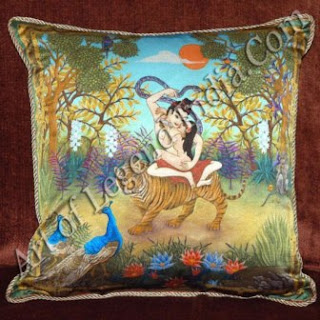










0 Response to "Tantric Terminology"
Post a Comment